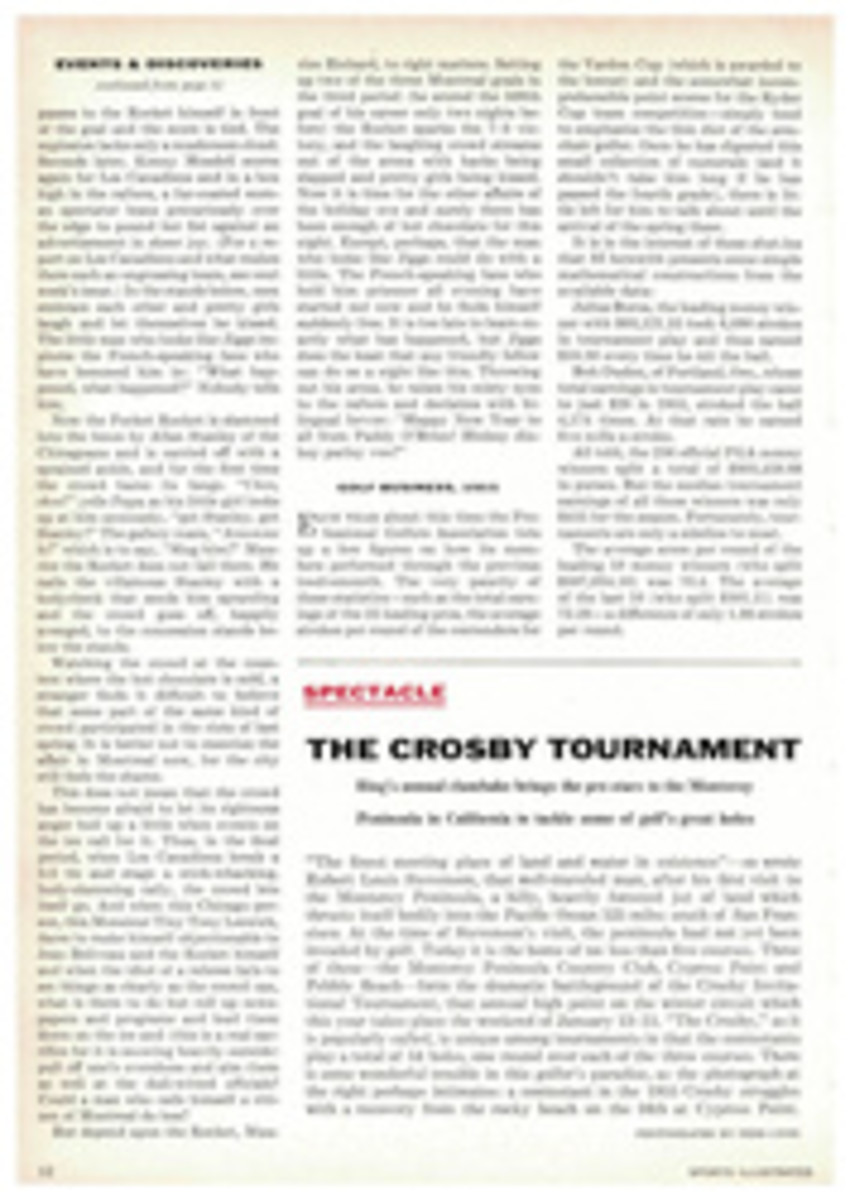
RUNNING ACROSS VARIOUS SNOW SURFACES PRESENTS PROBLEMS TO BE HANDLED ALERTLY AND BY APPLYING SPECIAL TECHNIQUES
Even good skiers may have a bad time in terrain where the snow surface varies from place to place. Handling these transitions requires special techniques.
For instance, a skier may well take a fall in going from packed powder to deep powder, since the increased friction of deep powder will slow the skis suddenly. The correct technique is to shift your weight back on the skis (one of the few times when the weight is not forward in skiing) and advance one ski until you are into the powder.
New snow which has blown across an icy base leaving alternate bare spots and powdery drifts should be skied slowly. The skier must continually shift his weight back where the snow is piled up and move the weight forward when the skis hit ice.
A crust formed by a thaw and a subsequent freeze is deceptive stuff. Even though this crust may hold the skis at first, the skier must always be alert to the possibility of breaking through. Sometimes the crust may break continuously and evenly under the skis and you are safe to ski at moderate speed. However, if the crust breaks in some spots and holds in others, be light on your skis, avoiding abrupt shifts of weight and sharp turns.
On spring days, the skier sometimes finds patches of wet snow on an otherwise dry slope. These patches can be spotted by their shininess. Check your speed, shift your weight back and advance one ski to avoid the spill that could follow the sudden slowing up of the skis on the wet snow.
PHOTO
FRIEDL PFEIFER

